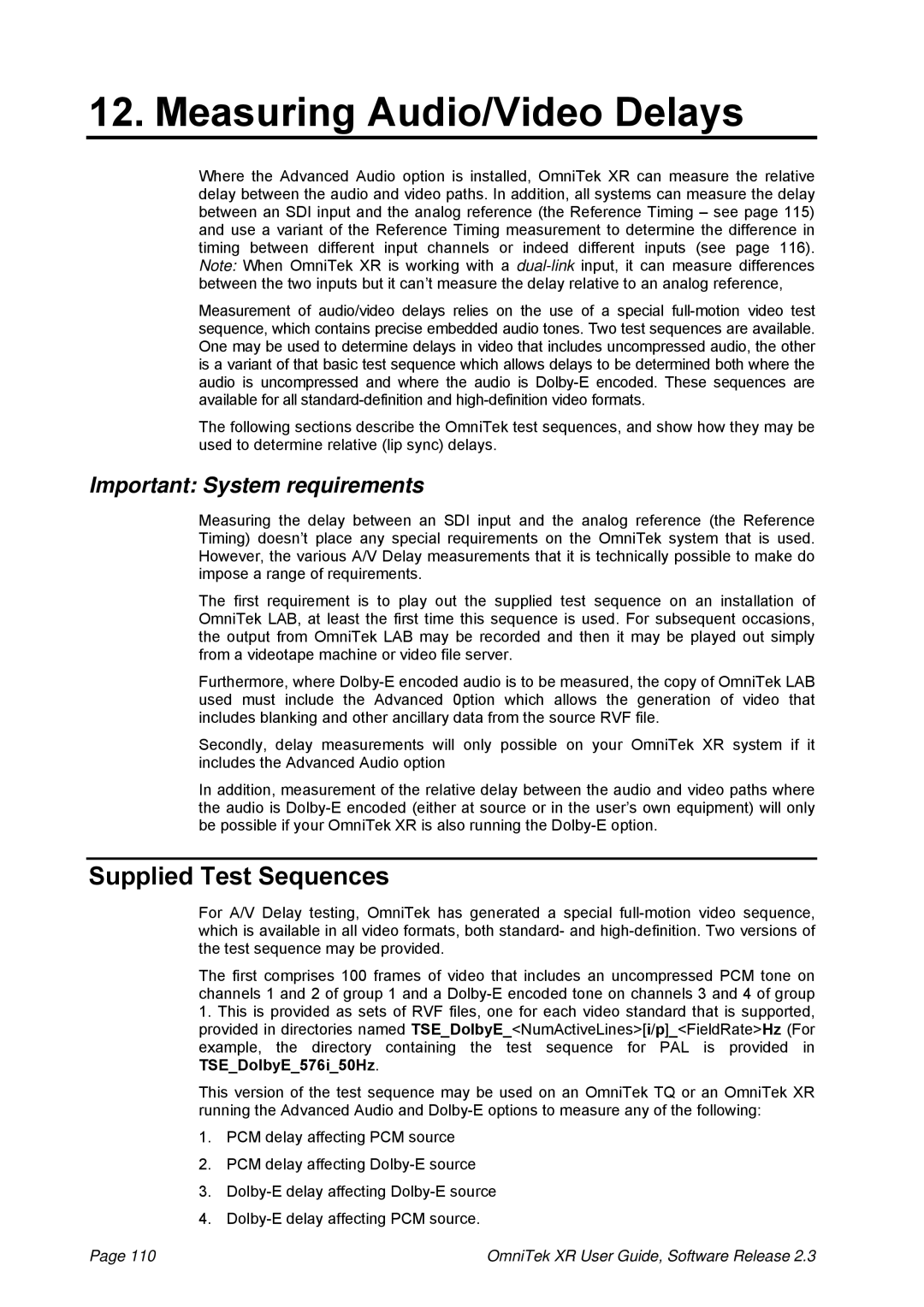
12. Measuring Audio/Video Delays
Where the Advanced Audio option is installed, OmniTek XR can measure the relative delay between the audio and video paths. In addition, all systems can measure the delay between an SDI input and the analog reference (the Reference Timing – see page 115) and use a variant of the Reference Timing measurement to determine the difference in timing between different input channels or indeed different inputs (see page 116). Note: When OmniTek XR is working with a
Measurement of audio/video delays relies on the use of a special
The following sections describe the OmniTek test sequences, and show how they may be used to determine relative (lip sync) delays.
Important: System requirements
Measuring the delay between an SDI input and the analog reference (the Reference Timing) doesn’t place any special requirements on the OmniTek system that is used. However, the various A/V Delay measurements that it is technically possible to make do impose a range of requirements.
The first requirement is to play out the supplied test sequence on an installation of OmniTek LAB, at least the first time this sequence is used. For subsequent occasions, the output from OmniTek LAB may be recorded and then it may be played out simply from a videotape machine or video file server.
Furthermore, where
Secondly, delay measurements will only possible on your OmniTek XR system if it includes the Advanced Audio option
In addition, measurement of the relative delay between the audio and video paths where the audio is
Supplied Test Sequences
For A/V Delay testing, OmniTek has generated a special
The first comprises 100 frames of video that includes an uncompressed PCM tone on channels 1 and 2 of group 1 and a
1.This is provided as sets of RVF files, one for each video standard that is supported, provided in directories named TSE_DolbyE_<NumActiveLines>[i/p]_<FieldRate>Hz (For example, the directory containing the test sequence for PAL is provided in TSE_DolbyE_576i_50Hz.
This version of the test sequence may be used on an OmniTek TQ or an OmniTek XR running the Advanced Audio and
1.PCM delay affecting PCM source
2.PCM delay affecting
3.
4.
Page 110 | OmniTek XR User Guide, Software Release 2.3 |
